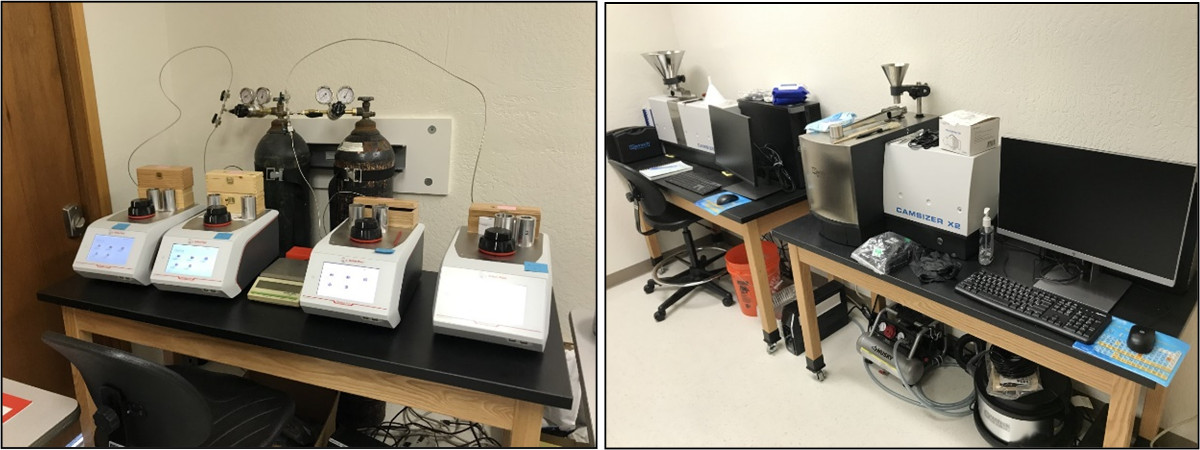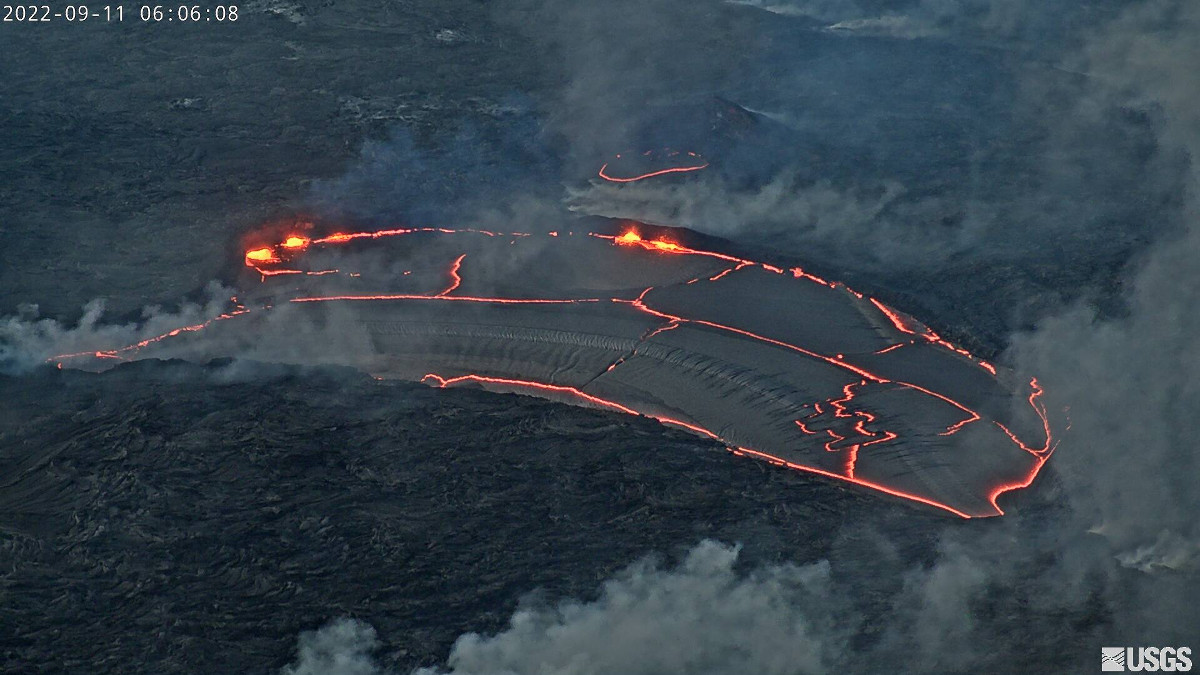
USGS: “The USGS Hawaiian Volcano Observatory (HVO) has acquired new physical volcanology laboratory instruments for rapid and accurate analysis of eruption samples. Left photo shows four pycnometers that determine volume and density. Right photo shows two particle analyzers that determine grain size and shape.”
(BIVN) – This week’s Volcano Watch article, written by Hawaiian Volcano Observatory geologist Carolyn Parcheta:
The USGS Hawaiian Volcano Observatory (HVO) has recently completed the purchase, installation, and calibration of a new physical volcanology laboratory funded by the Additional Supplemental Appropriations for Disaster Relief Act of 2019 (H.R. 2157).
It’s a unique combination of 13 instruments that will provide exciting new insights into the density, size, shape and componentry of volcanic rocks.
What are these instruments and what do they tell us about the samples they analyze? Well, before any sample from an eruption can be processed, it must be dried of any rainwater. The first instrument is a scientific oven that’s about the same size as one in your kitchen. This provides ample drying space to fit most of a large sample, or many small samples so that material can be analyzed quickly.
Next, there are six instruments focused exclusively on density. Density is important to analyze because it’s indicative of the gas-to-rock ratio that causes magma to erupt. To measure density, we need to weigh the sample and divide that by the sample volume. Weighing a sample is easy and uses a scale like the one you may have at home. The volume, however, is tricky to measure because volcanic products don’t have regular shapes. Traditionally, measuring volume is done by waterproofing a rock with wax and then submerging it in water. Archimedes’ Principle tells us that the volume of water displaced is equal to the volume of the rock. The waterproofing process can be laborious, meticulous, and time consuming when done by hand, but a thermo-vacuum machine fits a waterproof plastic sheet around the rock in seconds.
Another fast way to measure volume is with a pycnometer. HVO’s new lab has four of these instruments, which provide volume measurements for ash and foams (lava rocks with bubbles, called reticulite). Most often the pycnometers will be used for density of fine-grained samples like ash or individual fragments up to golf-ball-sized scoria or reticulite.
The sixth density-oriented machine is a 3D scanner, which scans a sample and creates a 3D model of it from which the volume is calculated. In the lab, the scanner can measure the volume for golf ball to football sized samples or it can also be detached and used on larger objects in the field.
Once the density is determined, the sample then moves to particle analyzers that measure size and shape of small grains. Grain size and shape are important to analyze because both parameters determine how far the fragments of lava can travel in the air. Size helps geologists determine the level of eruption explosivity, while the shape of shattered lava fragments indicate how the magma erupted explosively.
Traditionally, size is measured by hand sieving, which can be time consuming. Both particle analyzers measure the size and shape of millions of particles in minutes. They do that by taking photos of particles as they fall in front of high-speed cameras. Photos are automatically analyzed for area and perimeter, which are translated into several different measures of particle size and 2D shape. The particle analyzers document a range from about an inch (2.5 cm) to much less than one thousandth of an inch (0.8 microns). Any larger particles will still be hand processed with large sieves.
The final four instruments are microscopes. Two stereographic microscopes are used to inspect the components in the eruption: freshly erupted materials such as glass, pele’s hair, pele’s tears, and ash, or older fragments of rock (called lithics) and minerals. This componentry helps geologists understand the dynamics of the eruption.
Two petrographic microscopes are used for documenting minerals and vesicle (bubble) textures: mineral type, chemical structures, crystal zoning patters and the shape of vesicles, presence of micro fractures, and other features. These mineral characteristics help geologists determine how deep magma originates, how fast it rises, and potential eruption triggers while the vesicle traits and fractures indicate fragmentation mechanisms and fluid dynamic processes.
HVO’s new physical volcanology laboratory will be able to quickly process eruption samples, providing insights during an eruption crisis. Ultimately, this can lead to better constraints on eruption models and allow scientists to provide better hazard assessments. The new lab will be a resource for not only HVO but other volcano observatories and their collaborators across the globe as well.


by Big Island Video News6:32 am
on at
STORY SUMMARY
HAWAIʻI ISLAND - HVO’s new physical volcanology laboratory will be able to quickly process eruption samples, providing insights during an eruption crisis, scientists say.